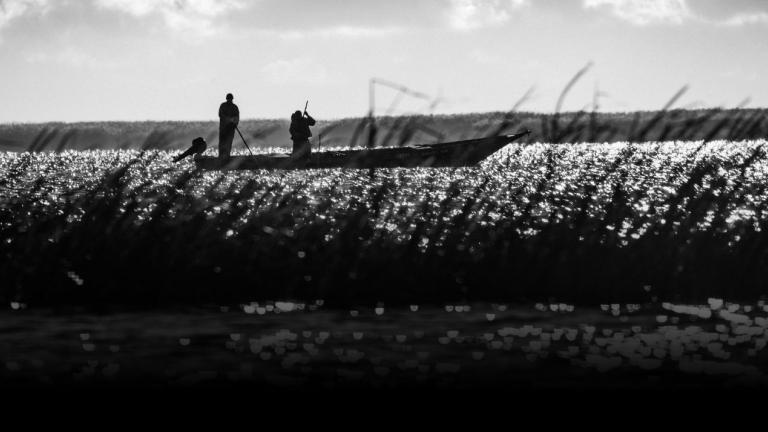
You can find Dubna, a small town three hours away from Moscow by train, both on a map and in the periodic table: dubnium, element number 105, was discovered at a research center there, and named after the town. A hasteless town, Dubna is defined as much by the surrounding forests as by the water: it sits on the banks of the Ivankovskoe Reservoir, the first part of a massive hydropower project called “Big Volga” whose construction spanned decades during the Soviet era. The complex, consisting of 11 dams on the Volga and its largest tributary, the Kama, is responsible for about 5% of the total electricity production in Russia. The Ivankovskoe Reservoir is both the oldest part of the complex and the farthest upstream, situated almost at the Volga’s headwaters.
About 2,300 miles long, the Volga—sometimes referred to as “Volga-matushka,” or “Mother Volga”—is the longest river in Europe and the biggest by water flow, arcing from northwest of Moscow around and down to the Caspian Sea. Some 60 million people—about 40% of Russia’s population—live in its basin, which spans almost a tenth of the country’s vast territory. Moscow, with its 12 million people, gets most of its drinking water from the Volga via the Moscow Canal. About 1,500 miles downstream, the strategic port city of Volgograd, formerly known as Stalingrad, was the site of World War II’s most decisive, and arguably bloodiest, battle. As an artery of commerce, a source of energy and drinking water, and a conveyor of history, the Volga touches nearly every aspect of life in Russia. It is what the Mississippi is to the United States or the Rhein to Germany.
When the station in Dubna was designed, in the early 1930s, the young Soviet state had just decided to catch up with the capitalist states of the West by rapidly accelerating its industrial development—but in order to do so, it needed to generate energy on a massive scale. By the time the last station was built, in the 1980s, the Soviet Union, having just hosted the Olympics for the first time, was about to launch perestroika, a program of large-scale democratic reforms intended to end an era of stagnation and revitalize the flailing state. The history of the Big Volga project is, in a sense, the history of Soviet industrialization. It is also a history of rivalry with the US, which for decades raced the Soviets to build bigger, more impressive dams.
The project was one of the largest nature-transforming schemes in history: put together, the artificial reservoirs on the Volga are about as big as Lake Erie. It tried to harness the river to provide the Russian people with necessary things: energy, transportation, and water. But it tried to do too much.
Read the full article here: https://www.technologyreview.com/2021/12/15/1041312/volga-river-dams-russia-soviets-infrastructure/





